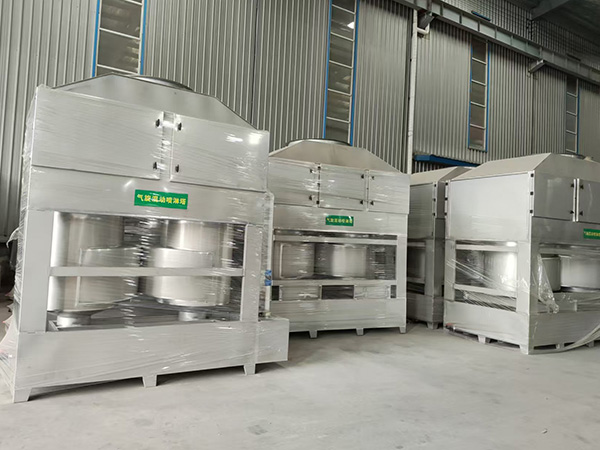-
All
-
bag Dust Collector
-
Electrostatic Precipitator
-
Cartridge Dust Collector
-
Desulfurization And Denitrification Equipment
-
Dust Collector Bag
-
Dust Collector Skeleton
-
Electromagnetic Pulse Valve
-
Rotary Valve
-
Screw Conveyor
-
Dust Conditioner
-
Plug Valve/Butterfly Valve
-
Scraper Conveyor
-
Catalytic Oxidizer
-
Cyclone Dust Collector
-
Sintered Plate Dust Collector
-
Spray Tower
-
Activated Carbon Adsorber
-
Light Oxygen Purifier
-
Dry Filter Box
-
Bucket Elevator

Cyclone Tower
At the heart of the cyclone tower is centrifugal separation technology. When polluted air enters tangentially from the upper part of the tower....
At the heart of the cyclone tower is centrifugal separation technology. When polluted air enters tangentially from the upper part of the tower, the high-speed rotating air flow throws particulate matter towards the tower walls. Due to centrifugal force, heavier particles fall down the wall to the dust collection area, while the purified air is expelled from the top. This process does not require a filter or a high-voltage electric field, and relies solely on physical inertia to complete the separation.
In contrast, filter purifiers require regular replacement of filter elements, which is more expensive for long-term use. Electrostatic dust captures fine particles, but may produce ozone byproducts. Cyclone towers avoid these problems and are particularly suitable for handling high dust concentrations.
Cyclone towers are highly efficient air purification equipment widely used in industrial and commercial fields. Through its special structure and airflow design, it can effectively capture and remove dust, particulate matter, odors and harmful gases from the air. Here's a detailed look at the cyclone tower schematic:
The cyclone tower is mainly composed of three parts: the tower body, the air flow controller and the purifier. The tower is a vertical cylindrical structure equipped with multiple layers of cyclones, each designed with unique deflector blades. These deflector blades guide the air flow to rotate within the cyclone plate, forming a cyclone.
The airflow controller is the core part of the cyclone tower, which is responsible for controlling the entry and exit of airflow. The deflector inside the controller can guide the air flow into the tower at a certain speed and angle, producing rotational motion. At the same time, the controller is also equipped with a control valve, which can adjust the speed and flow rate of the air flow as needed.
The purifier part is responsible for capturing and removing particulate matter and harmful gases from the air. Under the action of the cyclone, particulate matter and harmful gases are carried to the inside of the cyclone plate, which is then adsorbed on the tower wall. Over time, particulate matter and harmful gases adsorbed on the tower walls gradually accumulate, forming a filter membrane. When the thickness of the filter membrane reaches a certain level, the filter membrane needs to be cleaned or replaced.
Technical characteristics:
(1) Low maintenance requirements: The filterless design reduces the frequency of consumables replacement, and only needs to clean the dust bin regularly.
(2) High temperature and humidity resistance: In some industrial scenarios, high-temperature exhaust gas may damage the filter material or affect the electrostatic device, and cyclone towers are more adaptable to this.
(3) Advantages in handling large particles: the separation efficiency of particles with a diameter greater than 10 microns (such as wood chips and mineral powder) can reach more than 90%, but the efficiency of capturing fine particles such as PM2.5 is lower than that of HEPA filters.
It is important to note that cyclone towers are usually used in conjunction with other equipment. For example, in the field of fine chemicals, large particles can be removed through cyclone towers, and then activated carbon can be used to absorb harmful gases.







